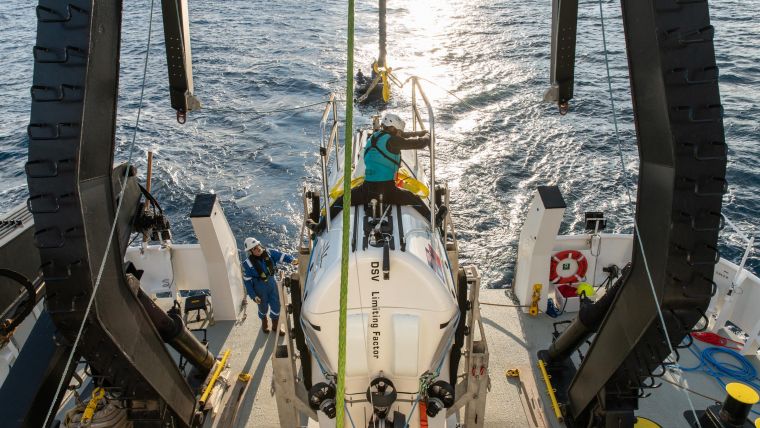Explorers Reach the Deepest Point in the Red Sea
Video Included
After successfully diving to the deepest point in the Mediterranean Sea, the Calypso Deep, in mid-February, Victor Vescovo and the Caladan Oceanic crew sailed through the Suez Canal and into the Red Sea. In cooperation with the King Abdullah University of Science and Technology (KAUST) in Thuwal, Saudi Arabia, Caladan made multiple manned dives into the little-explored Red Sea and, for the first time, to its deepest point: the Suakin Trough. The team also dived the shallower, but scientifically important Kebrit Deep (Arabic for 'sulfur'), 250 miles to the north.
Utilizing the state-of-the-art full ocean depth submersible DSV Limiting Factor from Triton Submarines, Victor Vescovo dived two deeps: the Suakin Trough (2,777m/9,111ft) and the Kebrit Deep (1,470m/4,823ft), making him the first person in history to physically reach both those points in the Red Sea. Accompanying Victor for the first dive at the Kerbit Deep was Dr Alan Jamieson from Newcastle University, who acted as an observer for the five hour-long mission.
Bottom of the Suakin Trough
A young Saudi engineer from Thuwal and a member of the KAUST Coastal and Marine Resources Core Lab, Mohammed A. Aljahdli, accompanied Victor on this first descent to the bottom of the Suakin Trough and the entire Red Sea. EYOS Expeditions executed the logistics and liaison for this complex international expedition.
The Suakin Trough and Kebrit Deep exhibit remarkably unique characteristics as both have 'brine lakes' on the seafloor that are significantly different in character than the seawater above them. This creates distinct 'shorelines' underwater between the regular seawater on top and the ultra-dense brine pools that settle in the centres of the Deeps.
The pools at these locations are approximately ten metres deep on average. Mineral- and sponge-encrusted 'chimneys' were observed dotting the 'shorelines' of the Kebrit Deep, although none appeared active. The team also dived into the caldera of an extinct underwater volcano in the Suakin Trough to study its unique geology.
Deepest-diving Saudi of all Time
“It was wonderful to join a young Saudi Arabian national to the bottom of the Red Sea in a manned submersible – for the first time in history. We also believe this will make him the deepest-diving Saudi of all time,” said Vescovo. “As we continue this year’s expedition into the Indian and Pacific oceans, we hope to explore as many new areas as possible with this, the deepest diving system on the planet, and investigate the 90% of the ocean that remains unexplored.
“We are so excited about the collaboration between Caladan Oceanic and KAUST, and even more proud that our very own Mohammed Aljahdali is the first Saudi to reach the deepest point in the Red Sea,” said Justin Mynar, executive director of the KAUST Core Labs and Research Infrastructure. The Red Sea is virtually unexplored and is a major research priority for KAUST. “In order to protect this important resource, we need to understand it, and partnering with Victor has given us the opportunity to observe and sample the deepest and most inaccessible regions like never before.”
Nekton's First Descent Mission
The next phase in the 2020 Caladan Oceanic Expeditions is in partnership with the Nekton organization in the Indian Ocean to explore the Seychelles and Maldives for Nekton’s First Descent programme. For more details on this month-long expedition, visit: www.nektonmission.org.
In the May/June issue of Hydro International, we'll report














